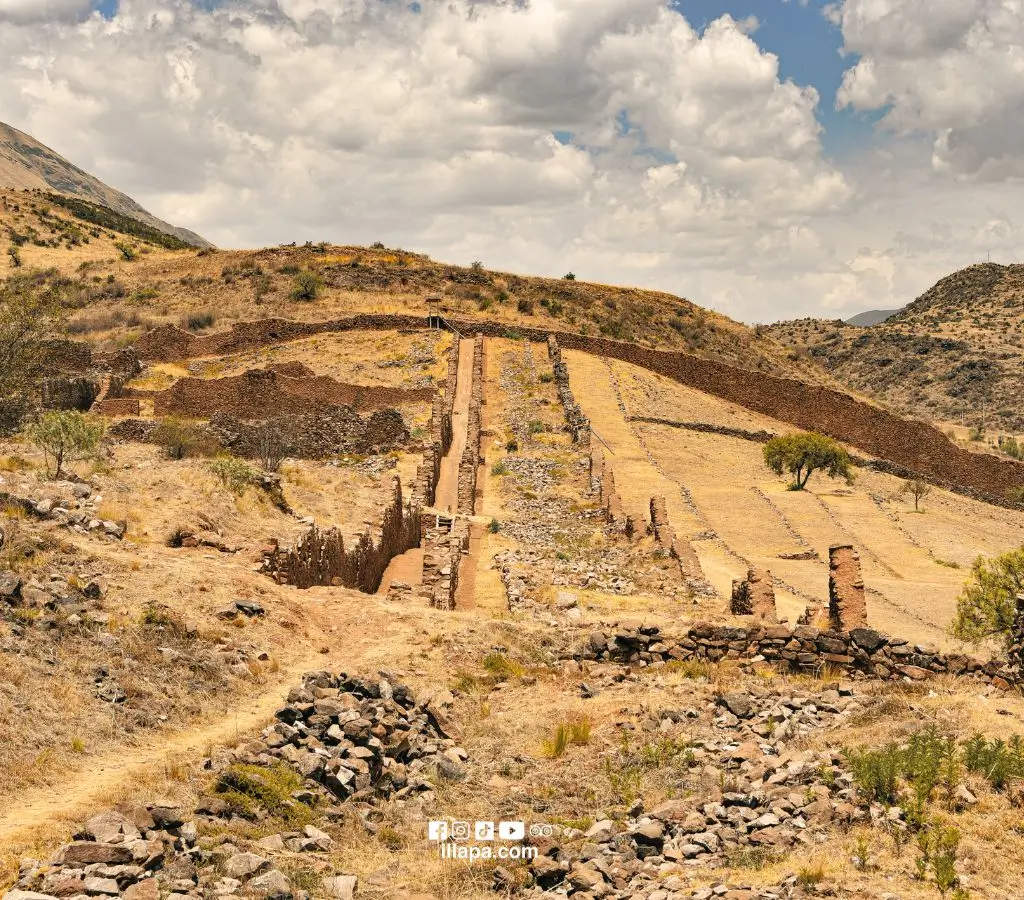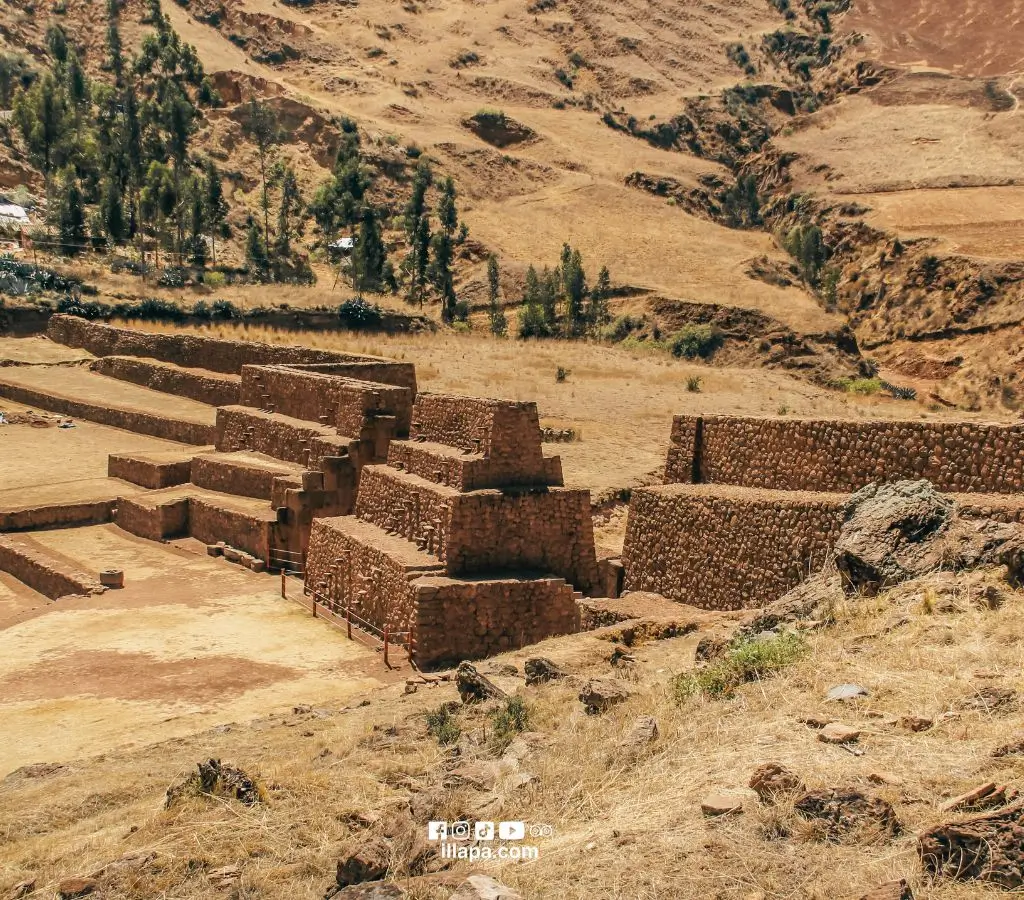Discover the grandeur of the Archaeological Park of Piquillacta, a historical and archaeological treasure in Peru. This impressive site reveals the greatness of the Wari civilization in this part of the southern Andes. By visiting, you will witness its splendor and architectural complexity, immersing yourself in the rich pre-Hispanic history of the region. Join us and uncover the lost legacy of Piquillacta in an unforgettable experience in Cusco!
The Archaeological Park of Piquillacta offers visitors the opportunity to delve into the rich history of the Cusco region and discover the remnants of a pre-Inca civilization. With an extension of approximately 50 hectares, this archaeological complex features a series of structures and buildings that reveal the advanced urban and architectural planning of the Wari civilization.
From cobbled streets to imposing defensive walls, every corner of Piquillacta, or "Flea Town" or "Small Town," tells a fascinating story about the life and beliefs of its ancient inhabitants.
During research conducted by the Cusco Reconcentrated Directorate of Culture, among pieces and idols, 6 small idols, 24 silver laminated pieces representing women, 3 complete anthropomorphic pieces, and 107 pieces of human body parts were found among objects.
Piquillacta is a pre-Inca archaeological site dating back to the period between 550 and 1100 AD. Located in the Cusco region, about 30 kilometers southeast of the city of Cusco, it is considered one of the largest and best-preserved cities of the Wari culture.
The city of Piquillacta is characterized by its planned urban design, with straight streets and geometric patterns in the distribution of its buildings. The main structures are built with adobe and stone, and the site is believed to have served as an important administrative, religious, and/or military center for the Wari.
The presence of distinctive architectural elements, such as high walls and defensive towers, suggests that Piquillacta may have had a defensive purpose in its function. The historical and archaeological importance of Piquillacta lies in the cultural influence of the Wari civilization in the Cusco region and the architecture found there.

Piquillacta is located approximately 30 kilometers southeast of the city of Cusco, in the district of Lucre. Its strategic location in the Andean highlands makes it an accessible destination for visitors who wish to explore the rich history and culture of the region.
The correct name is Piquillacta, although it is sometimes spelled as Piquillacta. Both forms refer to the same archaeological site, so their use is interchangeable. "Piquillacta" is the most common and currently used form.
There are several ways to get to Piquillacta, as detailed below:
For those who wish to go on their own, Piquillacta can be accessed from the city of Cusco via the road leading to Urcos and Puno. You can take buses heading towards Sicuani, which depart from Huaruropata; once on the bus, inform the driver that you will get off at Piquillacta, and from there, go to the archaeological site, which is well signposted, making it easy to find.
Another option to reach Piquillacta is to take a bus traveling on the Cusco - Puno route that passes through Piquillacta. It is also possible to take a taxi from the city, although it is important to agree on the price with the driver before starting the journey. However, keep in mind that this option can be a bit expensive.
For those who prefer a guided and comprehensive experience, it is best to hire a tourism agency. In this case, Illapa Andean Cultures offers organized excursions to Piquillacta, including transportation, tour guide, and entrance to the archaeological site. This option may be convenient for those who wish to learn more about the history and culture of the region with the help of experts, and it is the best option as they have a complete program, so you no longer have to worry about transportation.

Piquillacta possesses unique architecture, with its constructions distinguished by the use of reddish adobe in rhomboid shapes, which is a distinctive feature of the Wari. Overall, the architecture of Piquillacta reflects the high degree of complexity achieved by this pre-Inca civilization in urbanism, hydraulic infrastructure, administrative buildings, and ritual spaces. A unique legacy of the organizational and constructive capacity of the Wari in the central Andes.
Below, we will discuss more about its architecture:

Piquillacta is distinguished by its impressive architecture, which reflects the advanced urban planning of the Wari civilization. Among its most notable features are:
Its straight, cobbled streets divide the city into different sectors, as well as its imposing stone walls that surround and protect the archaeological complex. Additionally, a variety of structures can be seen, including houses, warehouses, and temples, providing a unique insight into the daily life and religious beliefs of the ancient inhabitants of Piquillacta.
The architecture of Piquillacta is of great cultural and archaeological importance, as it provides tangible evidence of the skill and creativity of the Wari civilization in building urban complexes. Furthermore, the design and layout of the structures in Piquillacta suggest a sophisticated social and political organization, demonstrating the power structure and community life in this ancient pre-Inca city.
Piquillacta is open to the public year-round, with visiting hours typically from 8:00 a.m. to 5:00 p.m. from Monday to Sunday.
It is recommended to visit the archaeological site during the dry season, which runs from May to September, to enjoy more favorable weather conditions and avoid the frequent rains during the rainy season. Additionally, it is advisable to avoid holidays and weekends, as the site may be more crowded.
If you are planning to travel to Piquillacta, you should consider the following recommendations, during and after your visit:
To ensure a safe and enriching experience in Piquillacta, it is recommended to follow these tips:
An ancient legend is told about a young and charming princess named Qori T’ika, or "Golden Flower", who, upon realizing the lack of water in her village, decided to offer her love to whoever could provide this vital resource.
Three princes presented themselves to her: Paukar, who built an aqueduct high in the mountains, but it did not reach the city; the second was Tuyasta, who surrounded the mountain slopes with aqueducts but also failed to reach the village; and finally, Sunqo Rumi, who was the only one able to fulfill the princess's request.
Currently, two of the three aqueducts built by the fortunate prince can still be seen, one of which crosses the city. What are you waiting for to visit and see these constructions that you will only find in Piquillacta?


